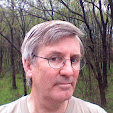When asked, “how was the trip?” I have been answering, “great!” but it has been difficult to go beyond that because it was not so much a trip as a re-alignment of assumptions. I realized this on my first morning at CICRA while getting dressed, at the moment of loading up my pockets. Wallet? No need. Keys? Nope. Passport? Won’t need that either. Money? No. Cell phone? Definitely not.
The movie that came up the most frequently in our conversations was not Fitzcarraldo, but Alien. This was not only because of our close looking at insects, but also because it is an immersive movie that puts you in another world – a planet named Thedus.
The piece of literature that came to my mind the most often was Ray Bradbury’s 1950 short story, The Long Rain, which I read in my teens nearly 45 years ago but which I remember vividly. The story takes place on Venus and it begins:
"The rain continued. It was a hard rain, a perpetual rain, a sweating and steaming rain; it was mizzle, a downpour, a fountain, a whipping at the eyes, an undertow at the ankles; it was a rain to drown all rains and the memory of rains. It came by the pound and the ton, it hacked at the jungle and cut the trees like scissors and shaved the grass and tunneled the soil and molted the bushes. It shrank men's hands into the hands of wrinkled apes; it rained a solid glassy rain, and it never stopped."
There is an orchid, a variety of Catesetum, in a small container attached to one of the supports for the entry to the dining hall at CICRA.

I cultivate three varieties of Catasetum at home. When I explain my enthusiasm for orchids, and this genera in particular, I always say, “I like the ones that look like they come from mars – not the ones you can get in the grocery store.” One of my Catasetums has just bloomed, and while here in Lawrence Kansas it looks like it came from Mars, it is at home in the Neotropics.
So, when asked about our time in the rainforest, I say it was great, and then I look for language, metaphores and experiences drawn from otherworldly precedents, like Alien, The Long Rain, and plants from mars.











































